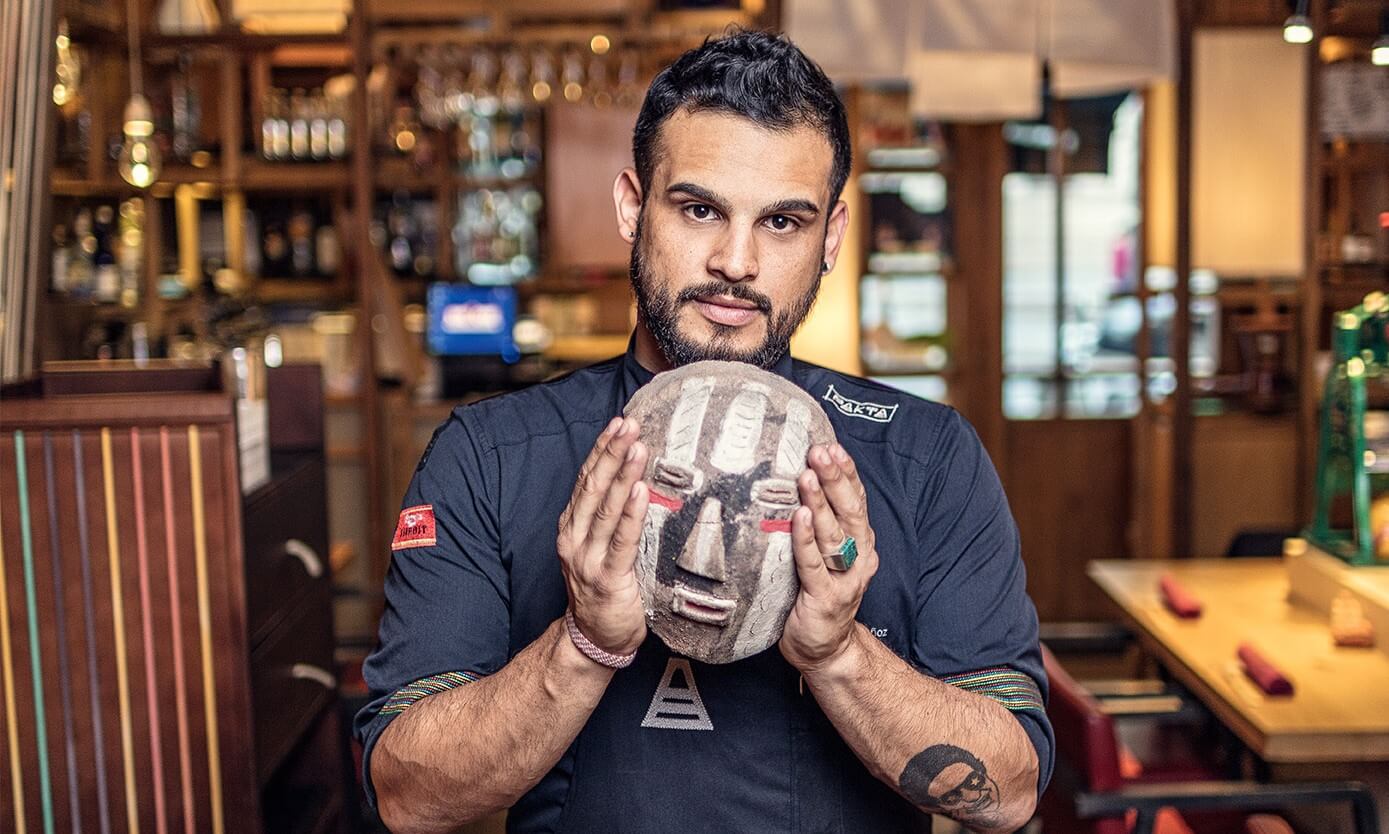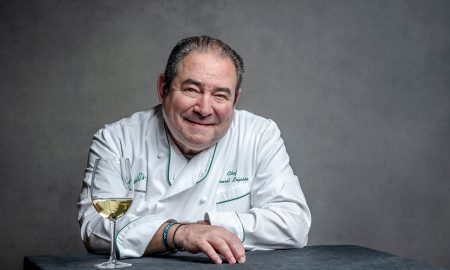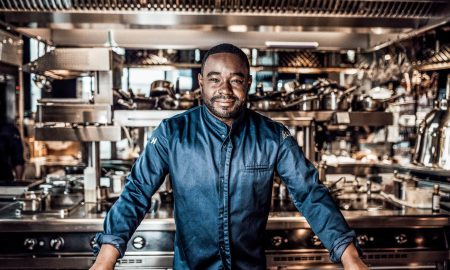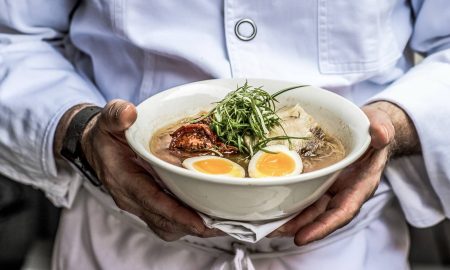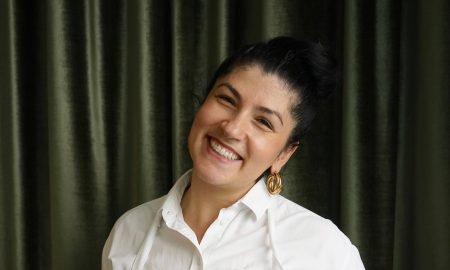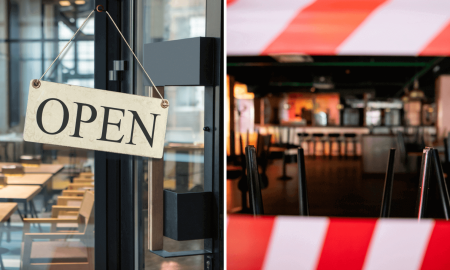The Adrià brothers specialize in testing the limits of possibility, expanding them, and giving them a unique twist. That’s their culinary language. They’ve transformed world gastronomy forever with it, and they’re still going strong.
If Albert Adrià weren’t a chef, he says, he’d be a director. In a way, though, he’s already both. In Barcelona alone, he runs the show at five independent locations, each of them with their own unique concept and yet all intertwined. They’re all part of what is now known as Barri Adrià, or the Adrià quarter, and the family of restaurants linked to brothers Albert and Ferran Adrià.
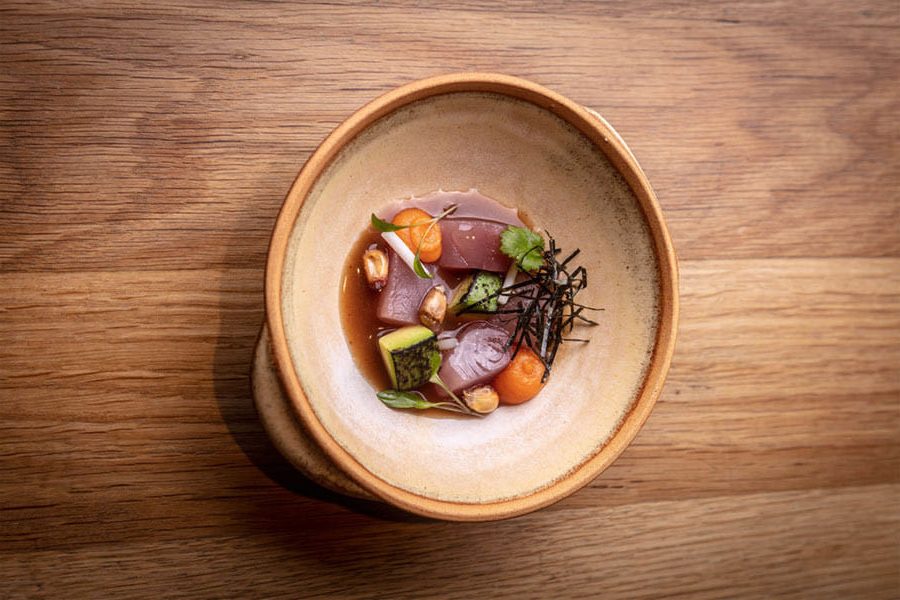
Image: Claudio Martinuzzi | Rolling Pin
Pakta, the Peruvian-Japanese locale, has Jorge Muñoz and Kioko Ii at the helm. He’s Peruvian, she’s Japanese, and they’re both responsible for combining Japanese techniques with Peru’s spectrum of powerful flavors. Michelin seems to think it’s working, as evidenced by the star Pakta received for its Nikkei cuisine just one year after it opened in 2014. Muñoz: “It’s amazing that we’re one of the only two Nikkei restaurants known worldwide.” And the only one in Europe. “It’s an honor to be able to represent my country and the Adrià family name in this way.” Surprisingly, the 33-year-old never actually wanted to be a chef. “I didn’t want to be in school anymore, and it was quick money,” Muñoz explains. “Plus it gave me the opportunity to travel. Well, and I’ve always really liked to eat,” he laughs. “In my neighborhood in Trujillo, my hometown in Peru, we’d all just walk straight into the kitchens in bars and cafés when we got hungry. Things were really informal back then.”
The young Peruvian wanted to travel, though, and his first gastronomic journey took him to the other side of the world, to Palazzo Versace in Queensland, Australia. “It was there that I first understood that gastronomy can be so much more. And realized that I liked cooking. Diego Muñoz was my first mentor. He showed me just how far you can get with cooking, and what a wonderful method of expressing yourself it can be.” So the talented youngster abandoned his plan to open a bar and devoted himself to cooking. That was back in 2005. It would be another seven years before he and Albert Adrià began planning Europe’s first Nikkei restaurant, which they opened in 2013. When Muñoz left Palazzo Versace and headed to Barcelona, which he had visited with his family back in 2000, he knew: “This was my calling. I wanted to learn, I wanted to get better, I wanted to test my own limits.” Even back then, the young Peruvian dreamed of joining the Adrià clan. Making that dream come true took a little while, though. First, Muñoz completed culinary training at the CETT institute in Barcelona and spent a summer working on Formentera. In 2009, he moved to Paris to do a master’s degree at Cordon Bleu.
The best-laid plans
Jorge Muñoz had one goal for himself: to become part of the Adrià gastro-”family”. Initially, though, the Adriàs weren’t on board with the plan. Muñoz: “They didn’t reply. I wrote them and wrote them. For months. Nothing. So instead I wrote to Mugaritz, a restaurant in the Basque region.” His invitation arrived in the mail a week later: “Three months in this location within the group, three months in another location, and then finally six months at Mugaritz, which has two Michelin stars.”
From under their noses
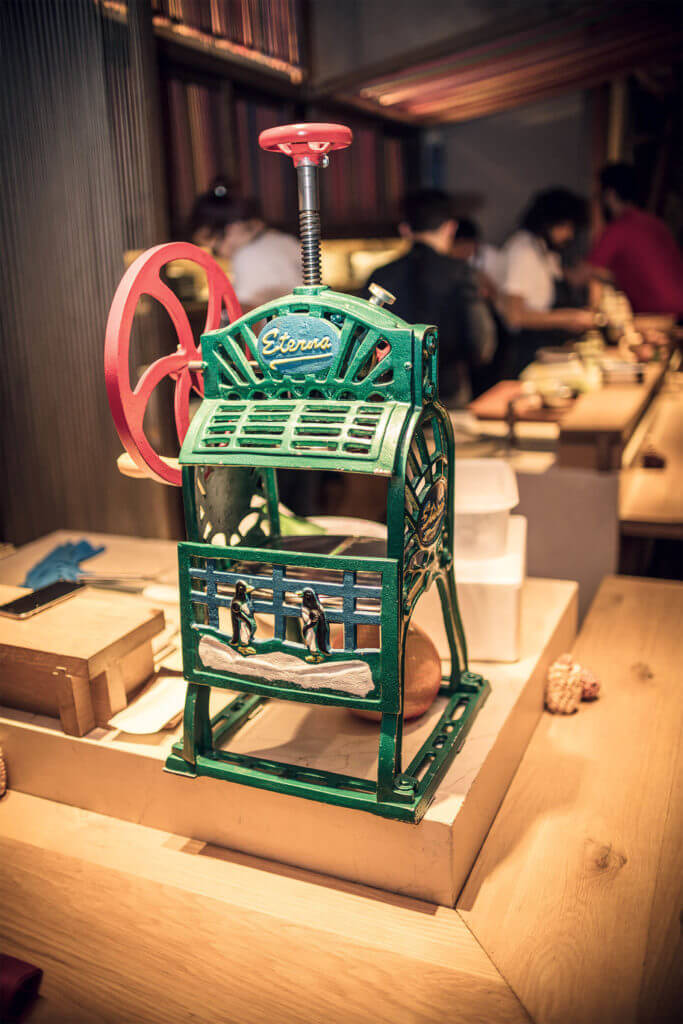
Image: Claudio Martinuzzi | Rolling Pin
As he was on his way to Basque country, he finally got a response from Tickets, one of the restaurants in BarriAdrià. “You’re invited to interview here.” Muñoz: “I turned right around and left, and started staging at 41°, one of Albert Adrià’s restaurants back then.” The rest is history… the history of Pakta, that is. The Adriàs don’t just have a nose for gastronomic trends and developments (along with a knack for inventing their own), they also clearly have an eye for talent. It didn’t take Albert Adrià long to recognize the young Peruvian’s potential. “Albert asked me if I wanted to lead the project, and I said yes,” he smiles. So in 2012, Jorge Muñoz returned to his native country to gather experience in a variety of Peruvian restaurants. At the end of the year, the two of them began testing out dishes for Pakta, the Nikkei restaurant Adrià was planning. Nikkei cuisine brings cultures together — specifically, the two cultures of Peru’s Japanese immigrants, who began arriving in waves in the 1890s, and by the 1980s had begun defining their own unique culinary tradition known as Nikkei. Albert Adrià: “The first generation of immigrants cooked authentic Japanese food. The longer the families lived in Peru, the more often they incorporated local products into their cuisine.” Nikkei translates roughly as “home away from home”. At Pakta in Barcelona, it takes the form of dishes like “percebes with white soy”, “sea cucumber nigiri with ume shoyu and green shiso”, or “angler fish liver with aji panca”. Muñoz: “Pakta wouldn’t be what it is today without our Japanese chef Kioko Ii and the dedication of the rest of our team.” Pakta is a Quechua word meaning “together”, and in a way, that sums up what the restaurant is all about. Japanese and Peruvian, together… the Pakta team and the rest of the BarriAdrià family, together… yep, there’s definitely a pattern here. Even the colors of the “giant weaving loom” decor reflect the philosophy.
Albert Adrià: “The colorful threads stand for the many facets of Peru; the white ones are for the white silk of Japan.” They stretch out over the heads of the diners as they’re discovering Nikkei cuisine with fingers and chopsticks, delighting in plates of “croaker ceviche with almond tiger’s milk” and “water soldiers with their own dashi”… all within an atmosphere that’s as friendly and cozy as anything else out there. Interior Design New York agreed, and awarded Pakta its top prize for design. Dried corncobs atop solid-wood tables, Peruvian masks on the walls and a fresh-fish sushi-nigiri bar better than anything you’d expect to see outside of Japan… This place is the definition of the word “fusion”. It’s all perfectly composed, yet still authentic. The only “masks” here are the ones on the walls. The people here have no facades; they cook the way they feel. And it’s delicious. Pakta only has space for 32 customers, so getting a table is tough. If you do manage it, though, you’re in for a combination of flavors like nothing else you’ll ever experience. Opposites attract. Like attracts like. Pakta brings both of those, and a whole lot more, together into a complete whole, weaving them in amid “chilcano nikkei” and “tomatoes with yellow aji and salad-juice vinaigrette”— just two more threads in the beautiful tapestry Albert Adrià and his protege, Jorge Muñoz, are creating together.
Jorge Muñoz was born in Trujillo, Peru, and first visited Barcelona with his family in 2000. He initially ended up in gastronomy only because it was easy money, but at the other end of the world, in Australia, he discovered how much he truly loved cooking. Culinary training in Barcelona and Paris followed. By knowing exactly what he wanted and never giving up on his dream, Muñoz managed to get himself on the Adrià brothers’ radar. They recognized his talent, and the rest is history… the history of Pakta in Barcelona.


